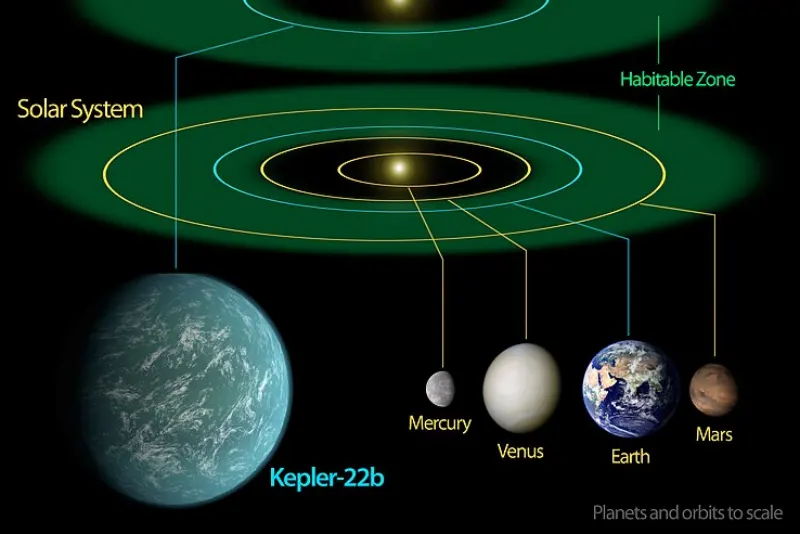At night, when we look up in the sky, we see a great sky with thousands of twinkling stars, but this is what we can see with our naked eyes. The universe is beyond our expectations. We don’t even have any idea about its limit.
Till now, scientists have been unable to find the boundaries of the universe. The search for boundaries makes us aware of the many colorful planets romping in space. Here we will look at some of the colorful planets that you have never heard of before or that you might hear about but never notice.
Let’s go!
8 Most Colorful Planets In The Universe
1. Gliese 667 Cc
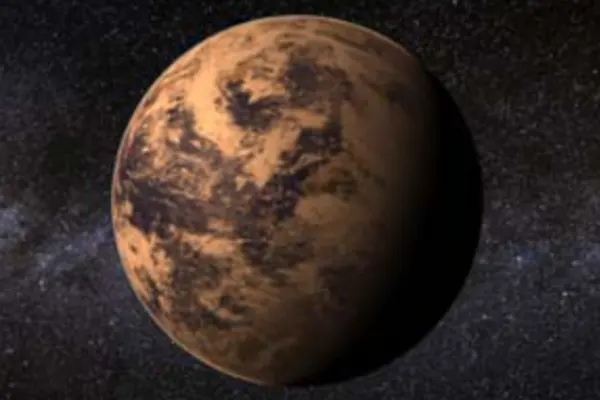
In our list first comes the Gliese 667 Cc, also known as a super-Earth. This colorful planet is found in the habitable zone of the red dwarf star. It is a member of the Gliese 667 triple-star system. Taking about the mass and radius?
The Gliese 667 Cc has a mass and radius greater than Earth but smaller than those of the giant planets Uranus and Neptune. Do you know the planet’s age is estimated to be over two billion years old? It is the second confirmed planet out of Gliese 667 C.
As of July 2018, Gliese 667 Cc is the fourth-most Earth-like exoplanet in the conservative habitable zone of its parent star. It is likely tidally locked, subject to tidal heating 300 times that of Earth due to its small eccentric orbit around the host star.
2. Gliese 667 Cb
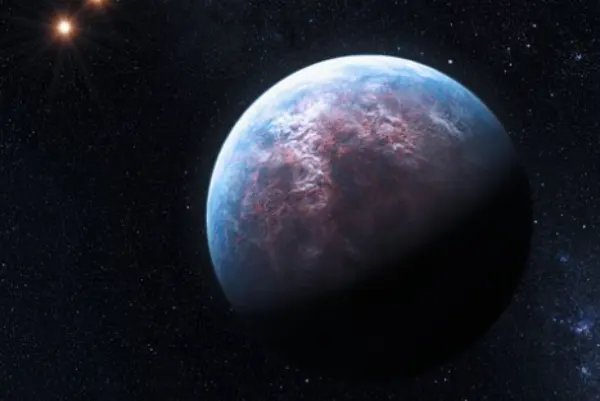
Gliese 667 Cb is a massive exoplanet orbiting the star Gliese 667 C, a member of the Gliese 667 triple-star system. It is likely a super-Earth or mini-Neptune.
Orbital stability analysis shows it cannot be more than twice its minimum mass, and it orbits too close to the star to be in the habitable zone, making it unsuitable for life.
Eccentricity analysis suggests it is not a rocky planet. The planet is likely tidally locked, with one side in permanent daylight and the other in darkness.
3. Kepler 22b
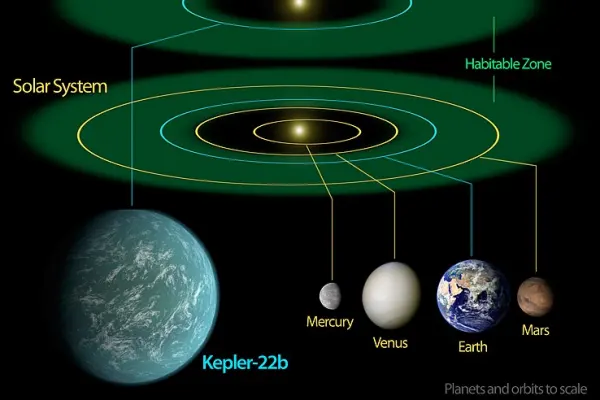
Kepler-22b, discovered by NASA’s Kepler Space Telescope in 2011, is an exoplanet orbiting within the habitable zone of the sun-like star Kepler-22. It is located about 640 light-years from Earth in the constellation of Cygnus.
Kepler-22b’s average distance from the star is 15% less than Earth’s, and its luminosity is 25% less than the Sun’s. This combination suggests a moderate surface temperature at that distance.
If Kepler-22b moves in a highly elliptical orbit, its surface temperature variance will be very high.
Recent estimates suggest that Kepler-22b has a 95% probability of being in the empirical habitable zone but less than a 5% chance of being in the conservative habitable zone.
4. Jupiter
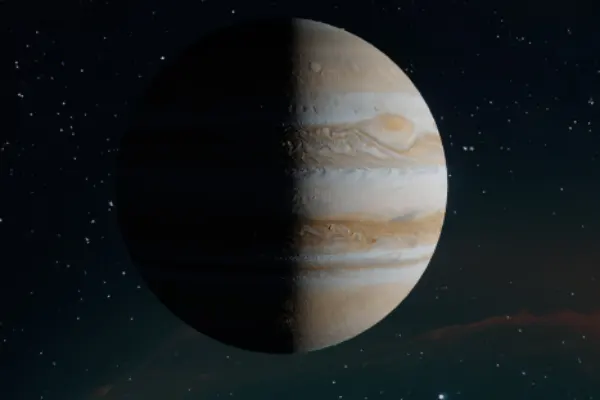
Jupiter, the fifth planet from the Sun and the largest in the Solar System, is a gas giant with a mass over two and a half times that of all other planets.
It orbits the Sun at 5.20 AU (778.5 Gm) and has an orbital period of 11.86 years.
Jupiter is the third brightest natural object in the Earth’s night sky after the Moon and Venus. It has 95 known natural satellites, with 79 less than 10 km in diameter. The four largest moons are Ganymede, Callisto, Io, and Europa.
5. Epsilon Eridani b
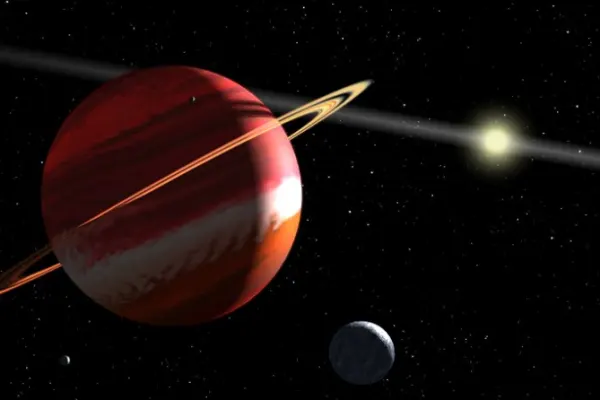
Epsilon Eridani b, also known as AEgir, is an exoplanet in the constellation of Eridanus, orbiting the star Epsilon Eridani. Discovered in 2000, it remains the only confirmed planet in its planetary system.
With a mass 0.6 times that of Jupiter, it orbits at 3.5 AU with a period of 7.6 years. Both the Extrasolar Planets Encyclopaedia and NASA Exoplanet Archive list it as ‘confirmed’.
6. Poltergeist
PSR B1257+12 b, also known as Poltergeist, is an extrasolar planet in the Virgo constellation, approximately 2,300 light-years away. It is the innermost object orbiting the pulsar Lich and is twice as massive as the Moon.
Initially designated PSR 1257+12 A, it was later PSR B1257+12 A. Despite being listed under the latter convention on astronomical databases like SIMBAD and the Extrasolar Planets Encyclopedia, it is still known as PSR B1257+12 b.
7. Phobetor
The next colorful planet’s family member is Phobetor, also known as PSR B1257+12 C. It is a super-Earth exoplanet orbiting the pulsar Lich in the Virgo constellation.
It was one of the first planets discovered outside the Solar System using the pulsar timing method. Phobetor has a mass of 3.9 MEarth and a likely radius of 1.5 R.
It orbits a pulsar named Lich, which has a surface temperature of ≤28,856 K and is one billion years old. Phobetor orbits its host star every 98 days at a distance of 0.46 AU, close to Mercury’s orbital distance from the Sun.
8. HD 189733 b
HD 189733 b is a hot Jupiter with a higher mass and radius. this colorful planet has an orbit, and take round of its host star once every 2.2 days at 152.0 kilometers per second.
Do you know it is one of the largest photometric transit depths of extrasolar planets?
The international team, led by Svetlana Berdyugina, observed polarized light indicating a larger scattering atmosphere.
Conclusion:
As we all come to an end, we come across many colorful planets, but this is not done here. We all know our earth is the most beautiful planet, as it is our home. But still, there is a vast universe we need to explore. We will continue our journey to explore the universe only on HowItSee.
Frequently Asked Questions:
Q1. What planet is colorful?
Ans. Jupiter, Earth, Gliese 667 Cc is a colorful planet.
Q2. Which is the most colorful planet in the universe?
Ans. Gliese 667Cc, and Jupiter, are some of the colorful planets but the most colorful planet in the universe is yet to be discovered.
Q3. Which planet is blue in color?
Ans. Neptune is blue in color.
Q4. Which planet is orange?
Ans. Jupiter is the orange planet of our solar system.
Q5. Which planet is pink?
Ans. GJ 504b is the pink planet.
Q6. Which planet is rainbow?
Ans. Pluto is called to be the rainbow planet.
Q7. What is the most beautiful planet?
Ans. Saturn is called to be the most beautiful planet because of its rings.
Q8. What is the blackest planet?
Ans. There is no blackest planet; however, the exoplanet TrES-2b is one of the darkest known.
Reference:
- https://en.m.wikipedia.org/wiki/Gliese_667_Cc
- https://en.m.wikipedia.org/wiki/Gliese_667_Cb
- https://en.m.wikipedia.org/wiki/Kepler-22b
- https://en.m.wikipedia.org/wiki/Jupiter
- https://en.m.wikipedia.org/wiki/Epsilon_Eridani_b
- https://en.m.wikipedia.org/wiki/PSR_B1257%2B12_A
- https://en.m.wikipedia.org/wiki/PSR_B1257%2B12_C
- https://en.m.wikipedia.org/wiki/HD_189733_b
Also Read:

As a content writer, I like to write about different niches. I have a curiosity about nature and animals. And like to learn about them. Through my writing, I like to share my experience and knowledge with you. I hope you are enjoying it too.
